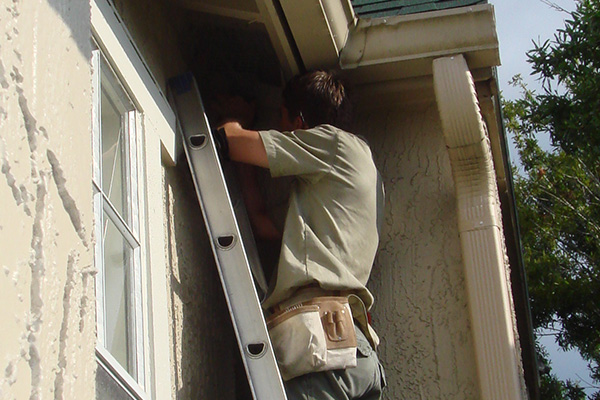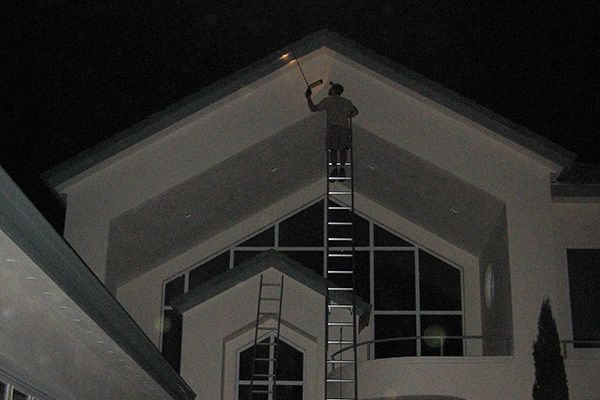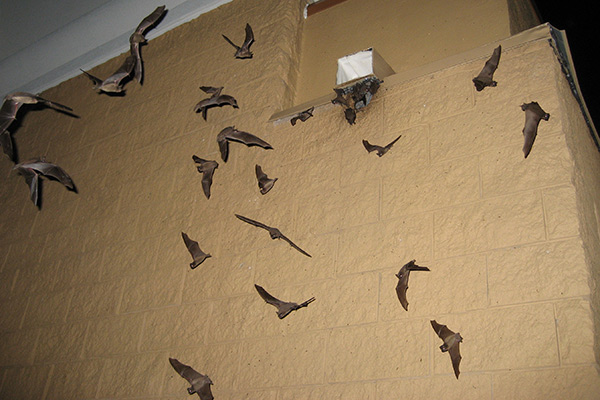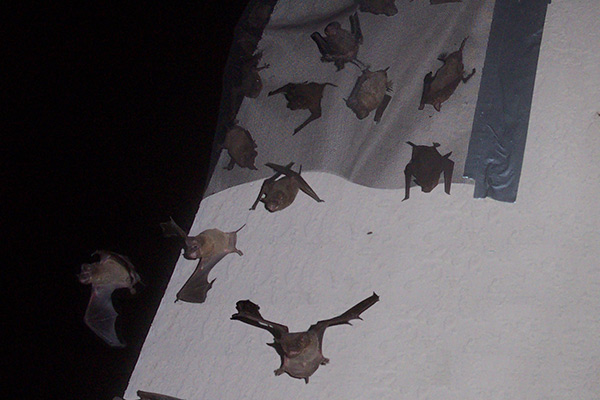- info@animalatticpest.com
- Call - we service 300 locations

How to Keep Bats Away - Bat Prevention Tips
Photo Examples of How to Keep Bats Away From Your House
1 - Home & Attic Inspection
A full inspection of the exterior of the home, including the roof and all vents, to find out how they are getting in. Plus an inspection inside the attic to identify bat damage.
2 - Repair the Bat Entry Holes
The job will fail unless you solve the source of the problem. Seal shut the entry holes, with professional grade repairs, or else the problem will happen again.
3 - Remove the Bats
Here we see a bat exclusion job using a bat funnel set at one of the bats' entry/exit holes leading into a hotel. A live exclusion is the only way to keep them away from the attic.
Information About Bat Prevention and How to Keep Bats Away
The primary means of bat prevention is to identify and seal small gaps in your house, particularly at roof peaks and dormer vents and eaves. Seal any area 3/8 inch or wider, with either caulk or expanding foam. What areas can bats enter a house through? If you have bats living in your area you may find yourself trying to find how to keep them out of your home. They may not be trying to get in right now, but eventually it could be possible that they will see your home as a possible place to build a roost. This is definitely not what you want.
What many don't think is that it does not take a whole lot of space for a bat to be able to gain access into your home. These are very small creatures, despite how they are frequently portrayed in movies and TV shows. The average bat weighs no more than an ounce, and the shape of their wings makes it easy for them to maneuver themselves so they can fit through the smallest of holes to gain access into your home.
What this means is that virtually any crack or crevice in the outside of your home may be an easy access point into your home. If you have a loose board in the siding, a bat can use that to get in. Broken tines in ventilation screens or a hole caused by another animal can also create an access point for the bat to bet in.
The bat wants a dark, secluded place to roost during the day. Do Bats Like Light at Night? Do They Like Light or Dark? So the walls in your home or the attic become a great place to build a home. This means they will seek access at any level within your home, so you need to make sure that the frame of your windows is solid, that the siding is securely attached all over your home, and that there are no holes are loose areas where the bat can easily slip right through.
A thorough investigation of the outside of your home at least once a year is a good idea to be on the safe side. If you live in an area where bats are known to reside this is simply a necessary precaution. You can never tell when a bat or two may separate from the colony wanting to start their own colony, and your attic or shed may look like a great option.
Bats can see your home as the perfect place to roost. You need to be proactive to ensure that they do not make your house their personal bed and breakfast. This may take you a couple of hours to do a thorough enough job of this, but it will be well worth it to protect you and your family.
The Bottom Line
How to prevent bats - it's very easy to keep them away from your attic, by performing simple home repairs to seal shut open holes they can use to get in. Presumably you are visiting this website because you already have bats in your attic, so you'll want to do a proper bat exclusion project. Just don't waste your time and money on ineffective repellent products.




